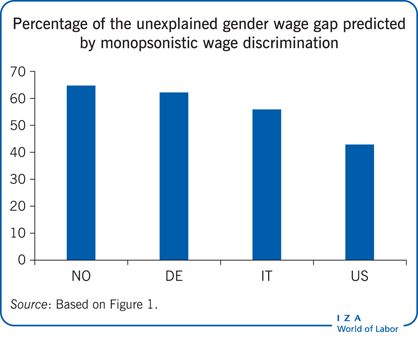Elevator pitch
There are pronounced and persistent wage differences between men and women in all parts of the world. A significant element of these wage disparities can be attributed to differences in worker and workplace characteristics, which are likely to mirror differences in worker productivity. However, a large part of these differences remains unexplained, and it is common to attribute them to discrimination by the employer that is rooted in prejudice against female workers. Yet recent empirical evidence suggests that, to a large extent, the gaps reflect “monopsonistic” wage discrimination—that is, employers exploiting their wage-setting power over women—rather than any sort of prejudice.

Key findings
Pros
Evidence shows that monopsonistic wage discrimination can account for a large part of the unexplained gender wage gap.
Once monopsonistic wage discrimination has been recognised, it can be straightforwardly countered by raising women’s sensitivity to wages, through a range of measures.
Equal pay legislation may raise women’s wages without harming their employment.
Cons
Employers profit from discriminating against women whose labor supply to the single employer is less sensitive to wages.
Since monopsonistic wage discrimination raises employers’ profits, it is likely to be widespread and to persist in the long term.
Apart from some suggestive findings, direct evidence on the drivers of women’s lower wage sensitivity is still lacking.
Very little is currently known on whether employers really make use of their more pronounced wage-setting power over women.